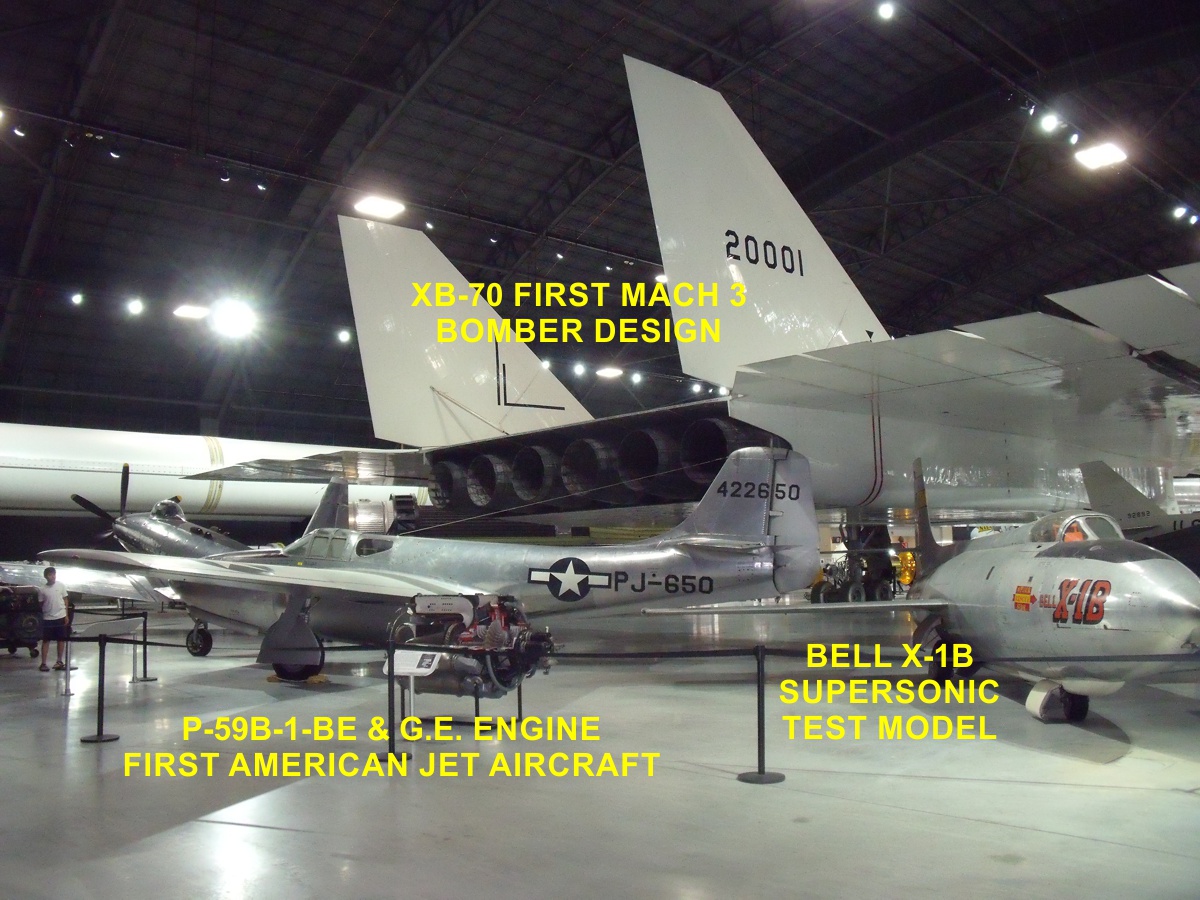
USAF Museum, Wright-Patterson Air Force Base, Dayton, Ohio ∑ ∑ PAGE 34.
July 27, 2019: This is one of the big days of our trip to the mid-western states. Linda took most of the photos on this page. I put the YELLOW identification notes on them in post processing of the images.
Research and Development Gallery
The XB-70 Valkyrie dominates the view as you enter the NEW hangar which
has research airplanes and other types with
many good exhibits as you will see on this page. This hangar has some
ONE-of-a-Kind aircraft from experimental tests of new designs. The P-59
was a secret project that began in 1942, well before the end of World War II. Read
this article to get plenty of information on the Bell P-59.

The other interesting airplane in the photo above is also made by Bell
Aircraft. It was the second supersonic X-plane designed to fly faster than
the speed of sound. The Bell X-1 was flown by Air Force Ace fighter pilot
Chuck Yeager in 1947 as the first rocket-powered aircraft to exceed the speed of
sound. That
one hangs in the National Air and Space Museum in Washington, DC. This
web page on the USAF
Museum site is about this Bell X-1B.
The jet engine below is one of SIX that were used on the XB-70 Valkyrie. https://en.wikipedia.org/wiki/North_American_XB-70_Valkyrie
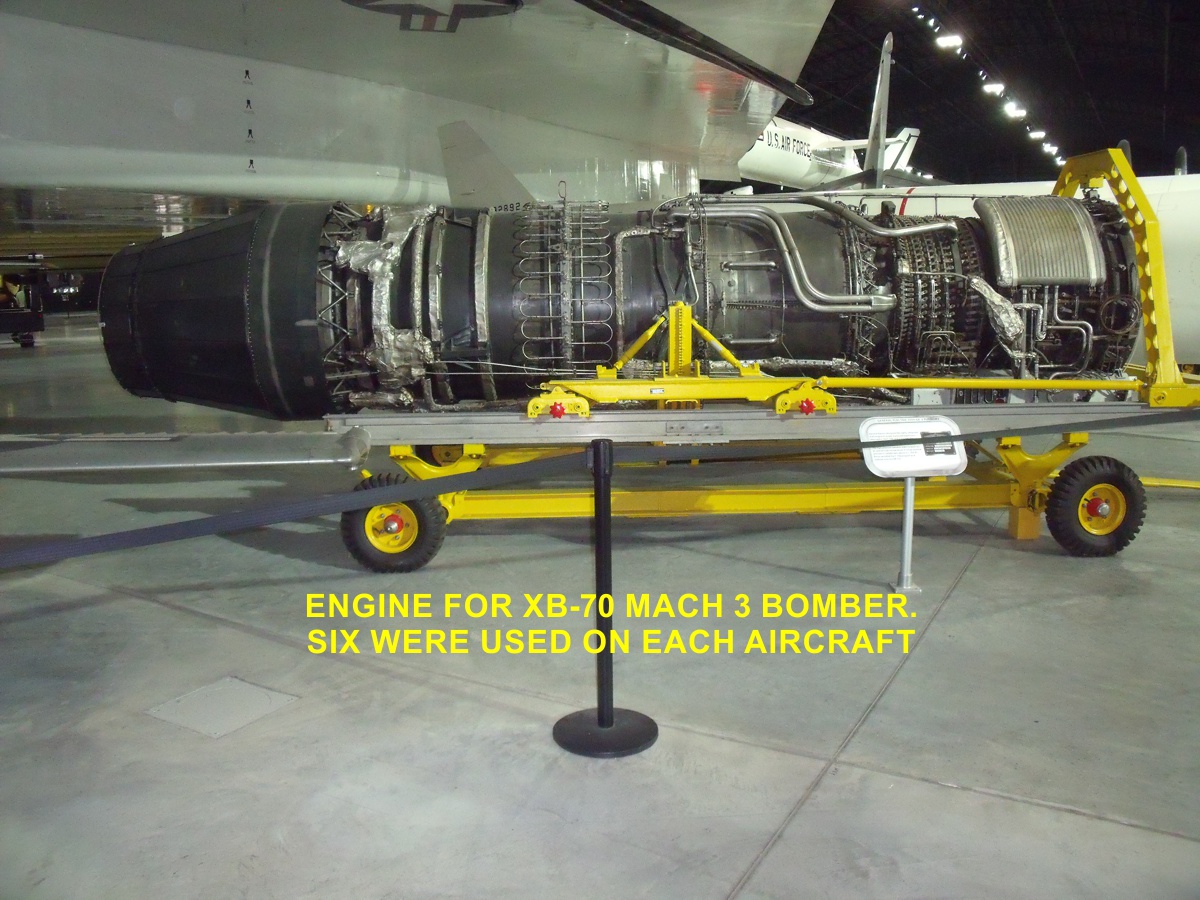 9
9
The airplane pointed at the camera with two jet engine intakes is the Douglas
X-3 Stiletto. It was the first X-plane to use titanium in its
structure. The wing type was the best feature and adopted by the Lockheed
Skunk Works in the design of the F-104 mach 2 fighter jet. The XF-85
Goblin was an attempt to give fighter support for the big and slow B-36
long-range bomber. The Goblin
was designed to be carried in the B-36 bomb bay and deployed to defend
against enemy fighters. This hangar features mostly experimental aircraft
and that is why the Goblin is located here with other X-planes, not with the
B-36 in the other gallery next door..
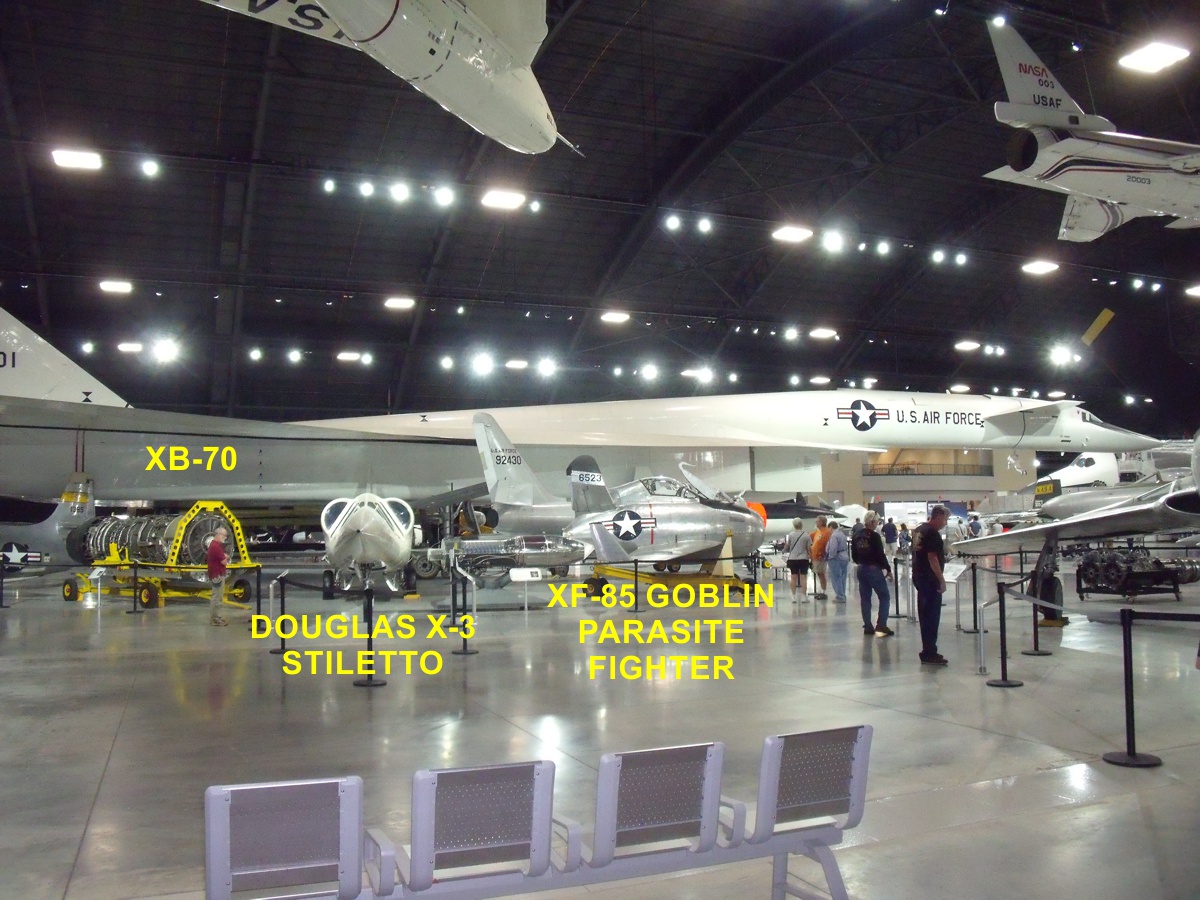
Here is my first picture of the XB-70 Valkyrie below which includes Linda at the
bottom right corner of the photo. When the XB-70 flew at mach 3, the paint came
off from the heating of the skin. The airplane in the upper right corner
of this photo is the X-29A which was built from an F-5A freedom fighter fuselage
parts and F-16 main landing gear. The forward swept wings were intended to give better
agility in air-to-air combat.

My second XB-70 image shows the tail section. Do not think that big
rocket engine nozzle behind and further away is part of the X-B70. That
rocket is displayed on it side for close-up views over on that side of the
hangar.

Linda took this photo of a large sign about the XB-70 Valkyrie. This
sign is on the other side of the Valkyrie facing the aircraft. The image also shows one of the
lifting body gliders used to develop the concept of the Shuttle landings at the
left side of the photo.
One of those rockets displayed horizontally is also partially visible beyond the
lifting body.
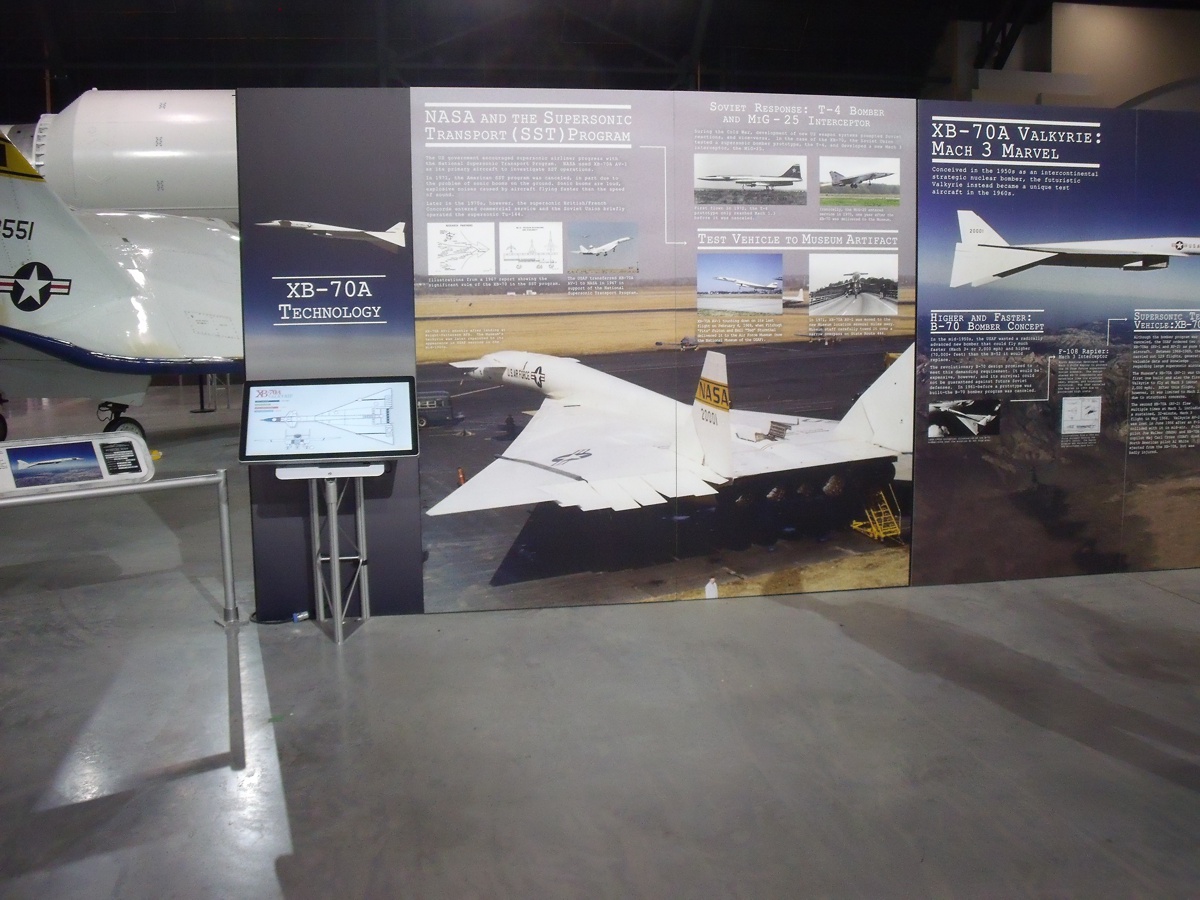
This image taken from the mezzanine shows a couple of lifting body
experimental research vehicles.
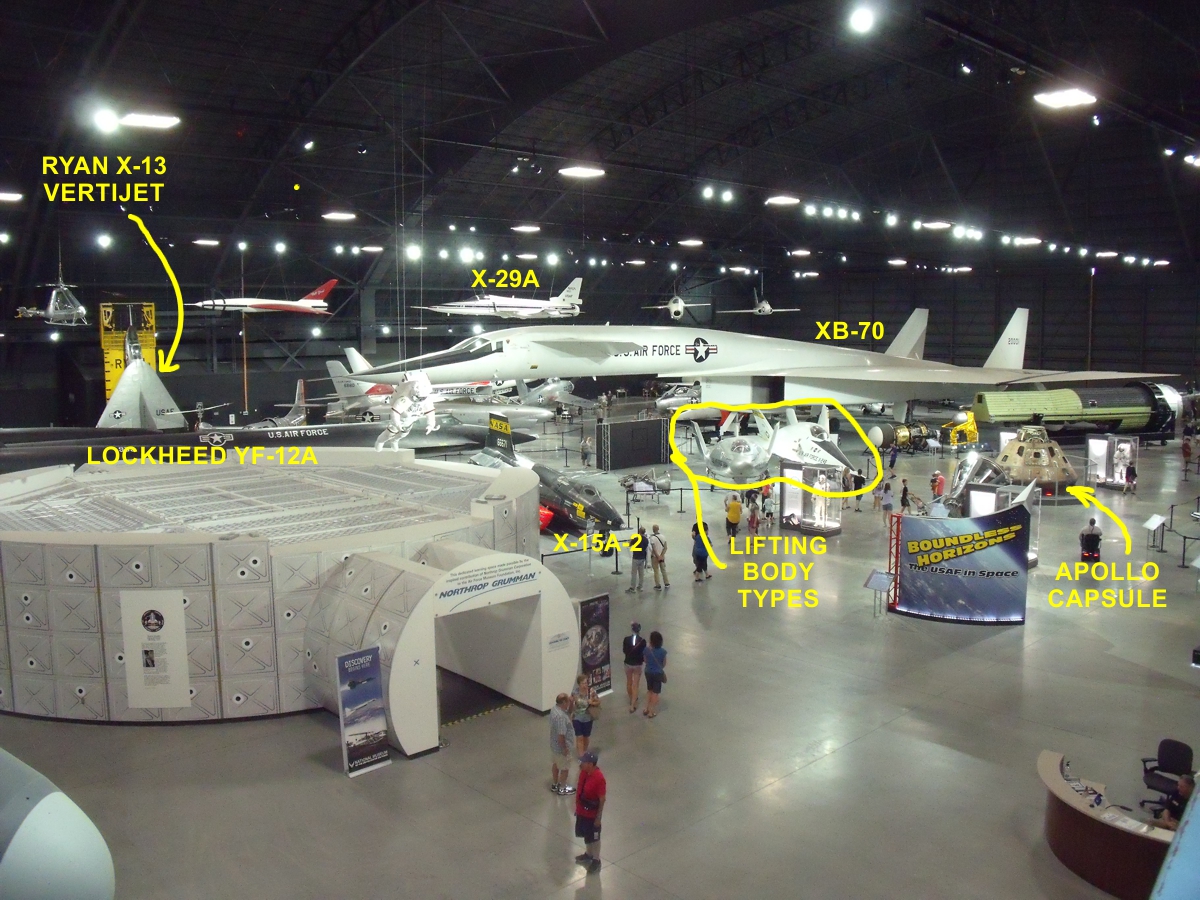
Here are two more views of the XB-70 Valkyrie and surrounding exhibits.
The X-29 is seen in full profile above and just beyond the Valkyrie.


Here is a better view of the YF-12A which was developed before the SR-71. More
information about this
series of Lockheed aircraft is found on Wikipedia.

This is one project that paved the way for more advanced
models. Follow the link below to learn more about the
DARKSTAR. The text on the sign is found on the web page. https://www.nationalmuseum.af.mil/Visit/Museum-Exhibits/Fact-Sheets/Display/Article/195774/lockheed-martin-rq-3-darkstar/

Dark Star is has a shape made for stealth. The next
project with a similar mission was the RQ-4 Global Hawk.

The Global Hawk was the next generation of remotely piloted and autonomous
reconnaissance aircraft after Dark Star. You can see more pictures and
learn about this amazing aircraft by clicking on this web link to the USAF
Museum: https://www.nationalmuseum.af.mil/Visit/Museum-Exhibits/Fact-Sheets/Display/Article/196043/northrop-grumman-rq-4-global-hawk/
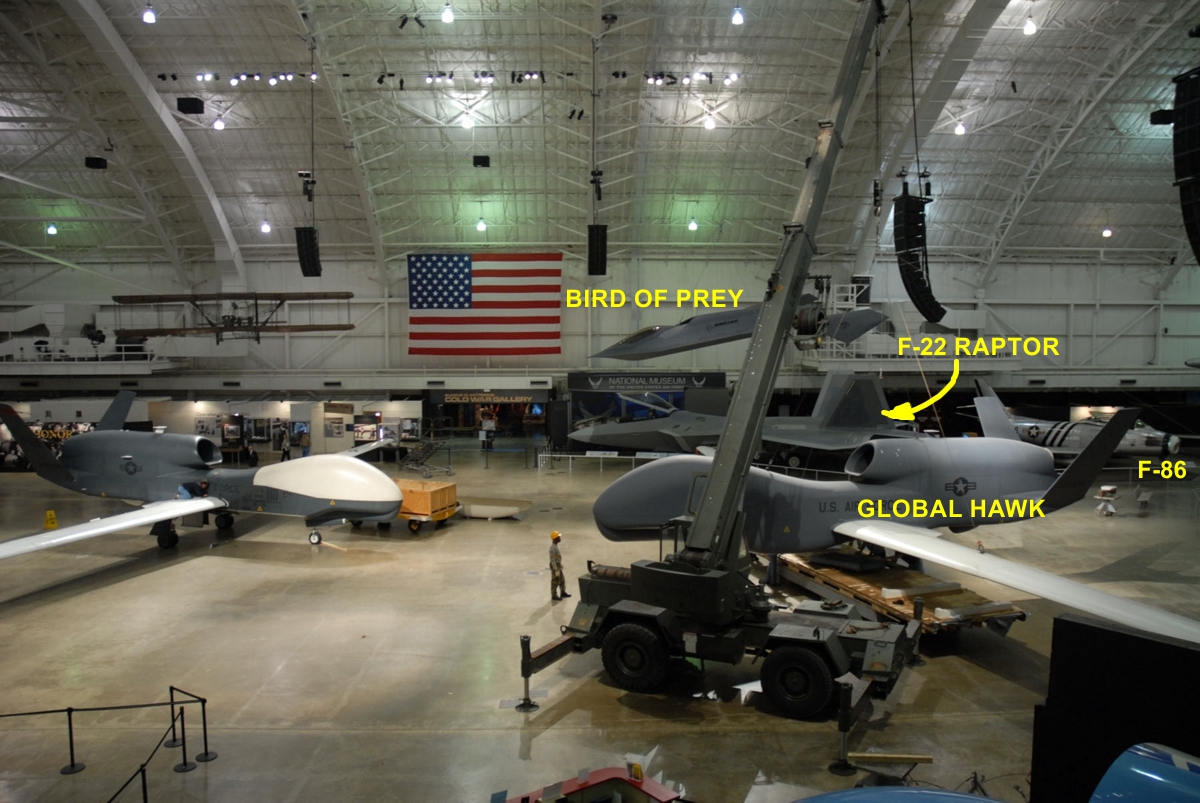
The F-22 Raptor is the current US Air Force top line fighter with stealth technology:
https://www.nationalmuseum.af.mil/Visit/Museum-Exhibits/Fact-Sheets/Display/Article/196040/lockheed-martin-f-22a-raptor/
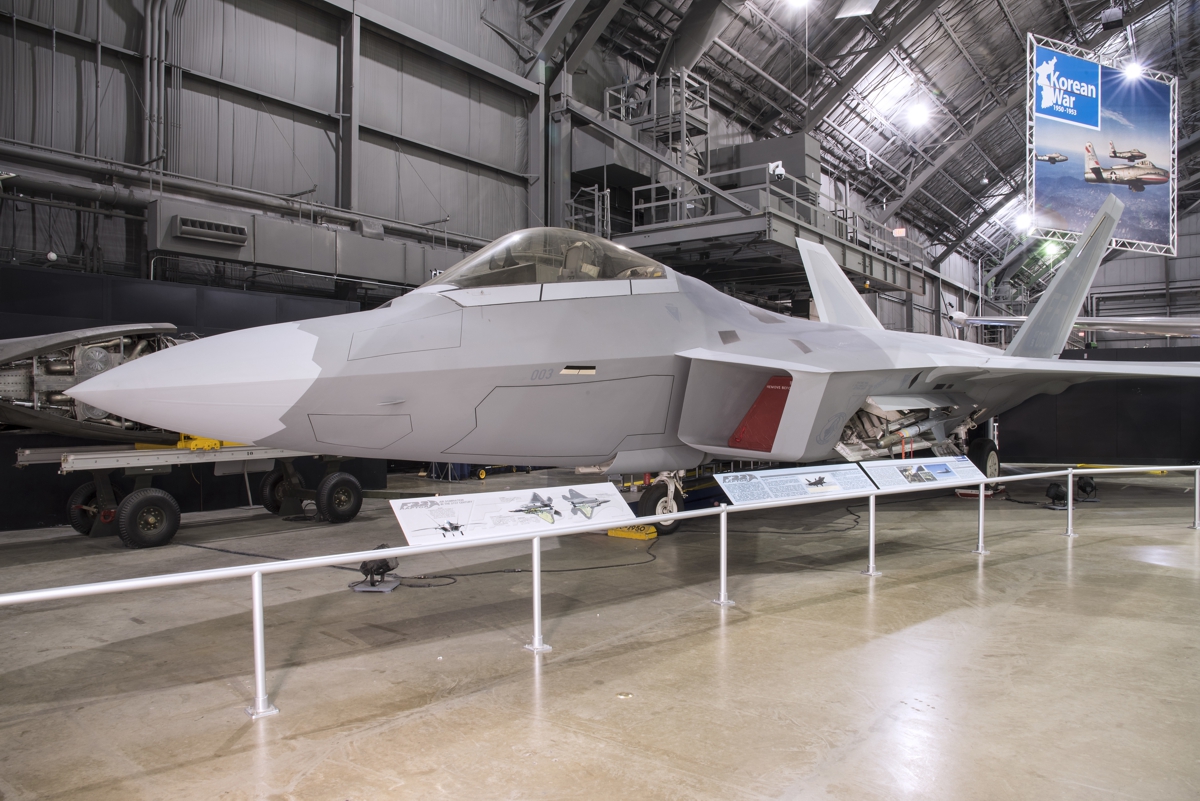
If you noticed the Boeing BIRD OF PREY in the photo above, here is what it
looks like up close, and a link to the USAF museum web page about it: https://media.defense.gov/2007/Nov/08/2000432218/-1/-1/0/071108-F-1234S-008.JPG
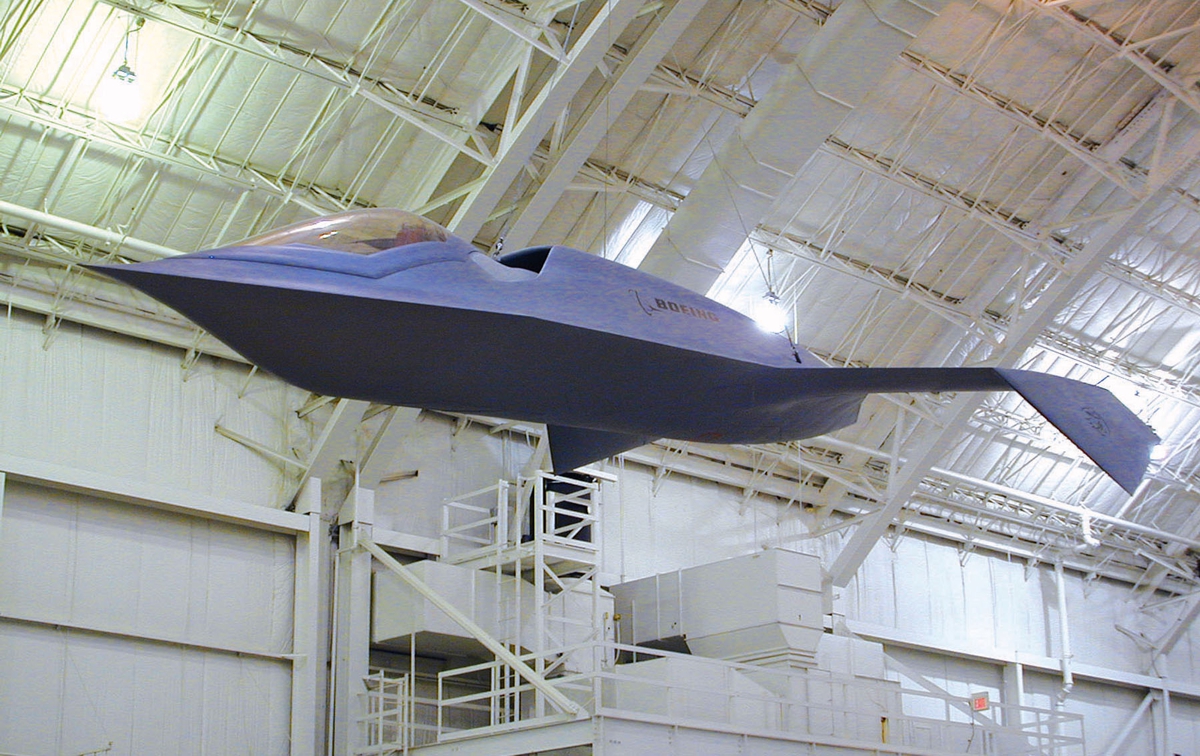
The Boeing X-45A J-UCAS is a highly autonomous uninhabited aircraft with
no pilot onboard. This aircraft is a joint project for the US Navy and US
Air Force. The Navy model can takeoff and land on an aircraft carrier at
sea. https://www.nationalmuseum.af.mil/Visit/Museum-Exhibits/Fact-Sheets/Display/Article/196732/boeing-x-45a-j-ucas/
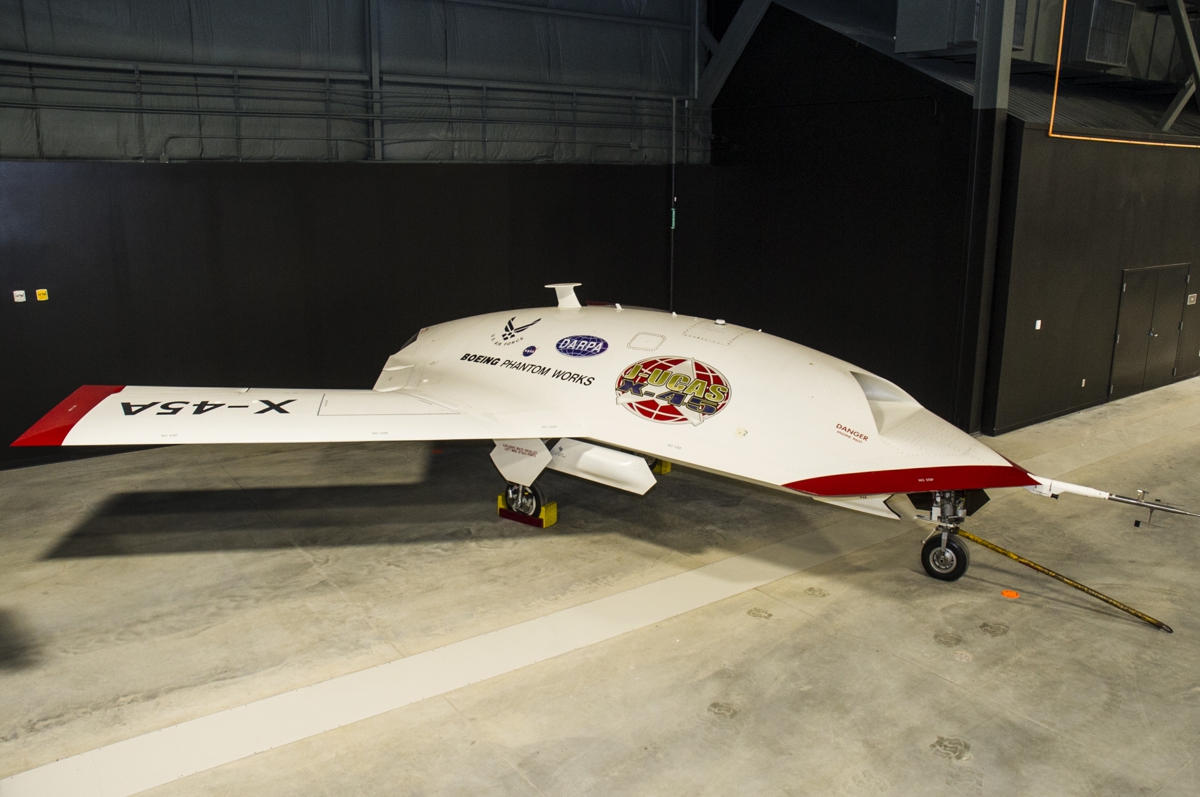
When I took a photo of the shuttle, I saw this Northrop YF-23A stealthy
fighter that lost the bidding competition with the Boeing F-22. Here is
link to the USAF museum web page about the YF-23A with more photos: https://www.nationalmuseum.af.mil/Visit/Museum-Exhibits/Fact-Sheets/Display/Article/195766/northrop-mcdonnell-douglas-yf-23a-black-widow-ii/

Here is a Space Shuttle full-size mockup ground trainer from NASA. I
have seen this exhibit when it was displayed at Kennedy Space Center. KSC
currently has a retired space shuttle on display in Florida. I took this
photo from the mezzanine level. The YF-23 is seen at the right side of
this photo.

Linda took this photo of the shuttle about the same time I took my photo
above
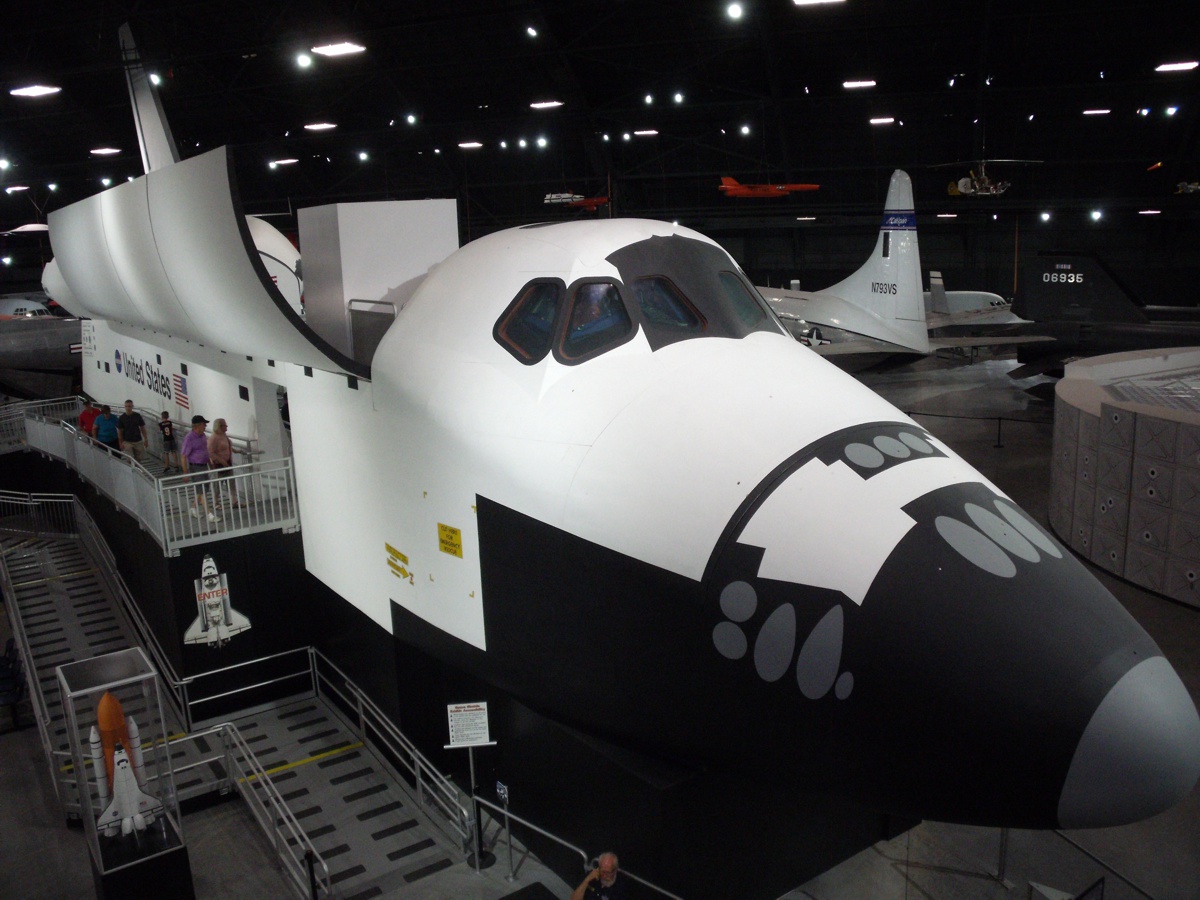
Here is a ground floor look at the shuttle ground simulator.

This Boeing YQM-94A was the first long-duration remotely-piloted
surveillance aircraft. The Global Hawk now fills that role in long-range
surveillance missions and it is autonomous since it can be programmed for each
flight with GPS guidance.
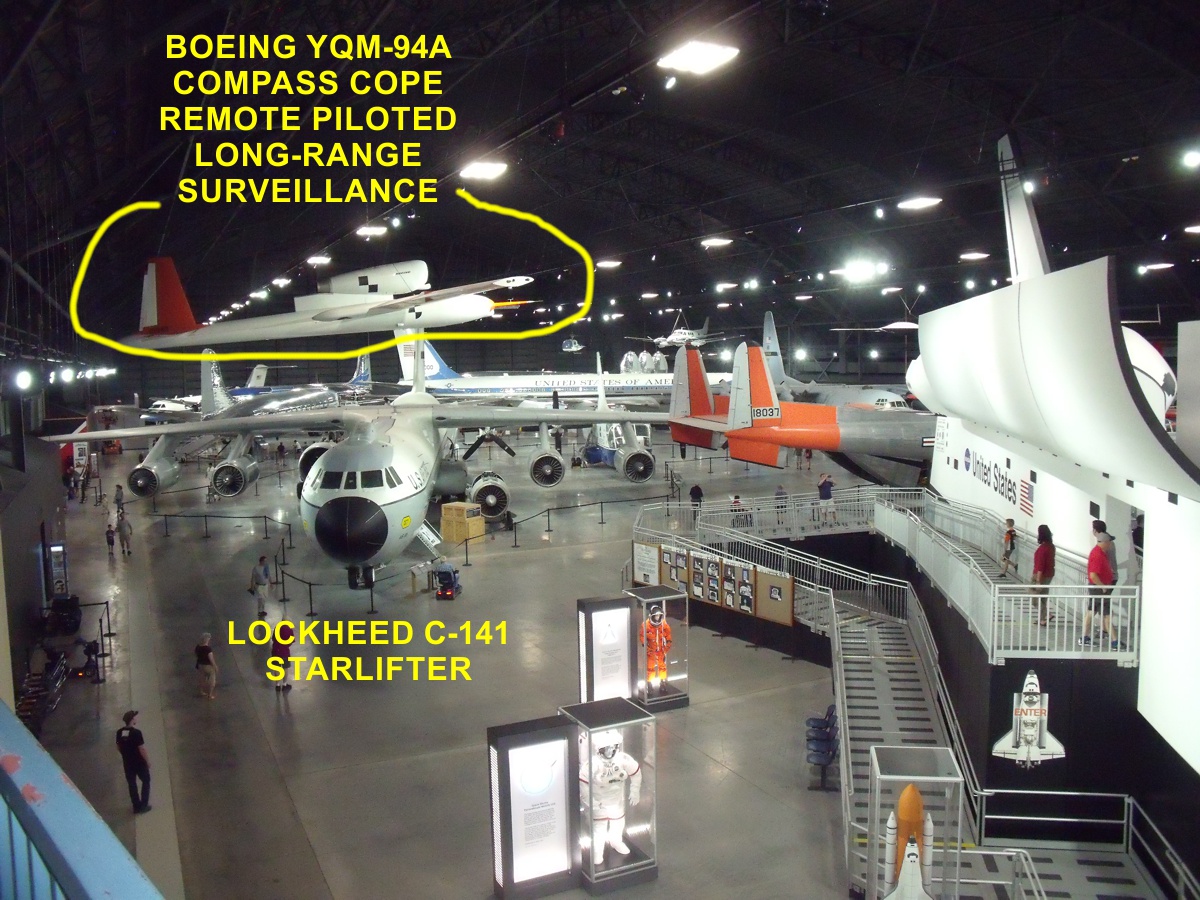
Looking north from the mezzanine in hangar 4 reveals many special aircraft
including the Presidential Gallery.
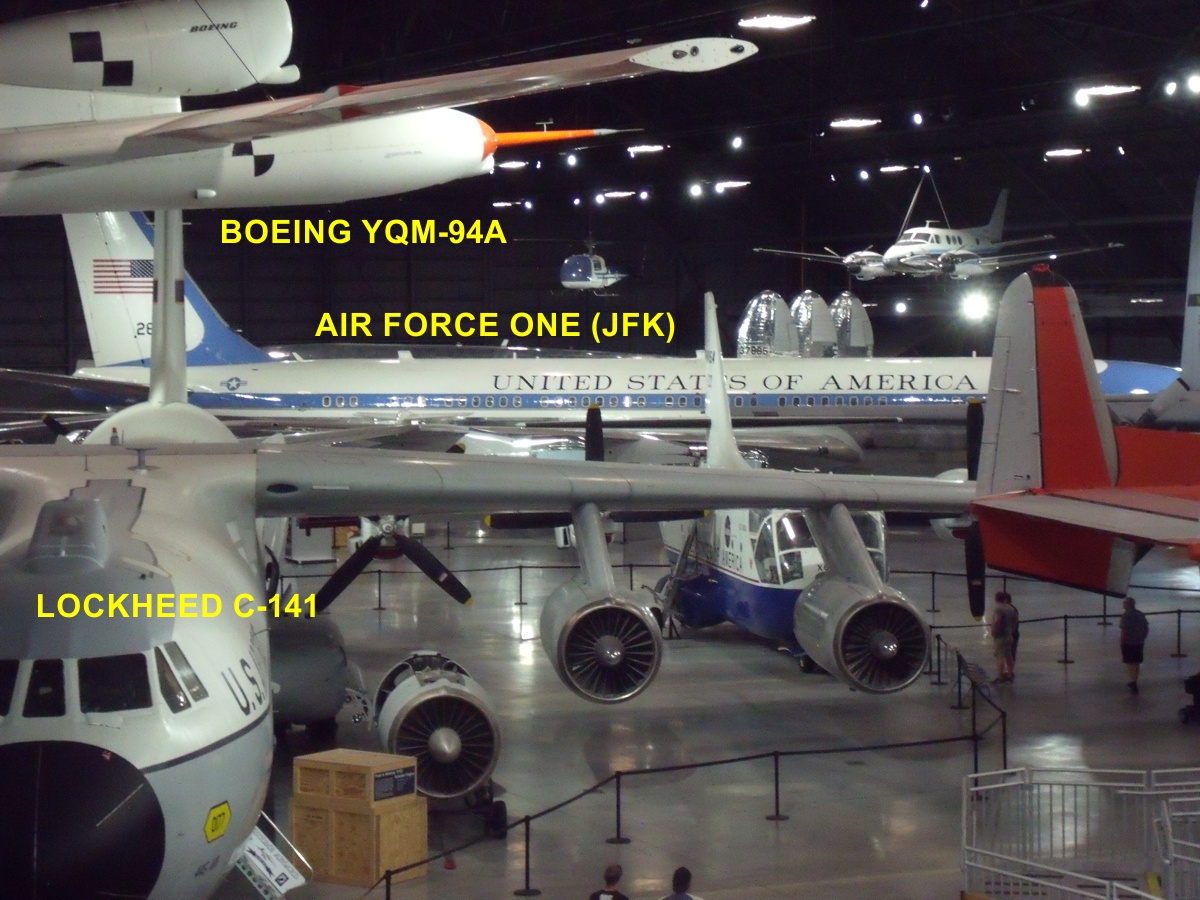
Space and pressure suits used with the Shuttle missions. The orange
one is the Space Shuttle Advanced Crew Escape Suit used from 1994 to 2011.
The White one is the Space Shuttle Extravehicular Mobility Unit.
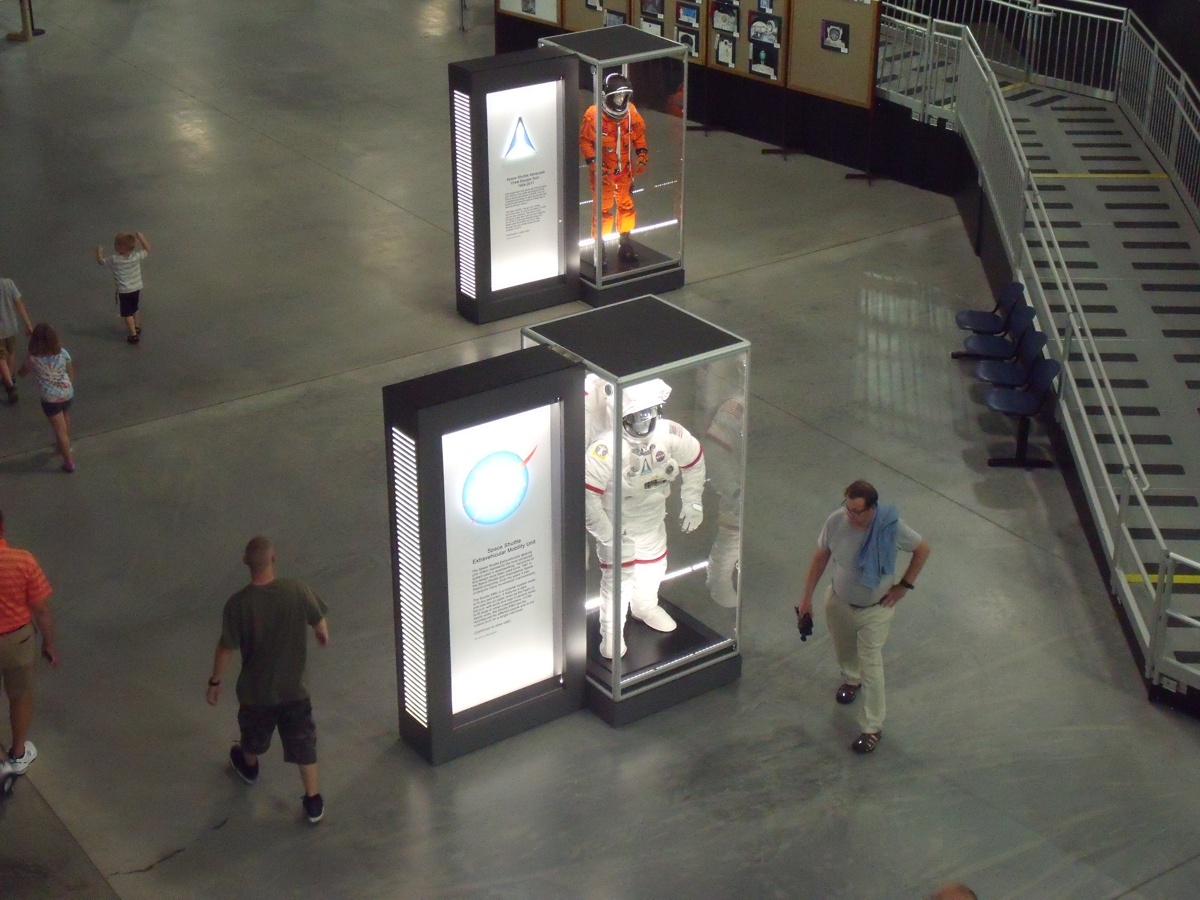
Cold War Gallery
There is a mezzanine level that has a view of two hangars looking down on
the main floors. This view is looking at hangar number 3 north of the
newest hangar where the XB-70 Valkyrie is on display. That large wheel
seen below was too heavy and it was a single-point of failure. The B-36
was the first heavy aircraft to have multiple tires on a "truck" that
would spread the load evenly to more than ONE tire. Linda took this photo.
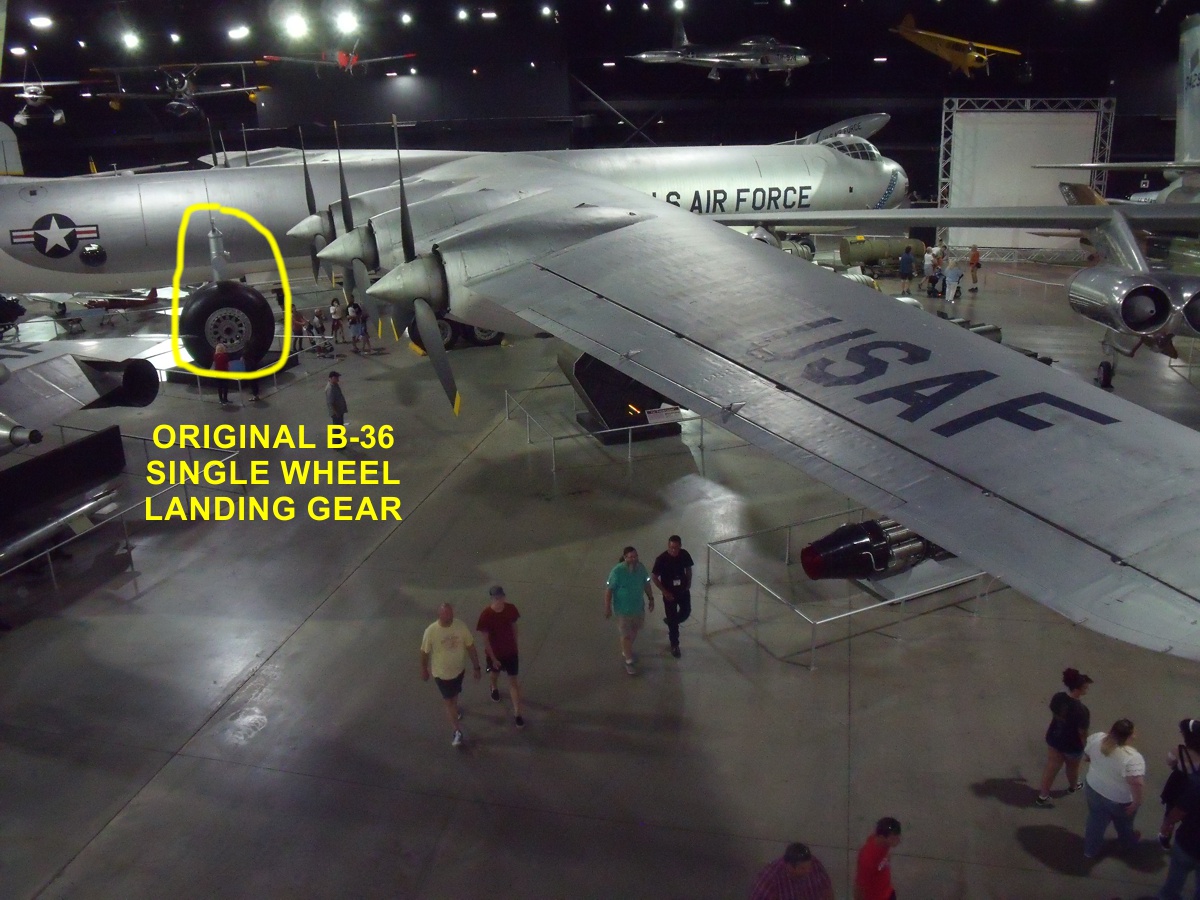
I took this photo down on the ground floor of the Cold War Gallery.
It shows several types of nuclear bombs that could be carried by this long-range
bomber built before aerial refueling was perfected.

There is one exhibit in this photo that is NOT associated with the
B-36. There is an air-launched missile with the sign showing it as GAM-72
which was it's original designation. That little missile was carried in
the bomb bay of a B-52 to be flown with a B-52 as a RADAR DECOY to confuse enemy
ground radar systems. McDonnell built it with folding wings that would
open when it was dropped out of the bomber. The current designation is
ADM-20 Quail. It can fly on a parallel course and at the same altitude as
the bomber, provide a radar signature as if it is really a B-52. With the
introduction of long range, air-launched cruise missiles (ALCM), the B-52
carries the missiles with their warheads about 100 miles from the target before
launch from the B-52. The bomber stays out of range while the ALCM (flying
bomb) is sent
to destroy the target.

There are TWO bomb bays on the B-36 as there are on many modern bombers
like the B-52 and the B-1B supersonic bomber. This allows for bombs to released alternately from the front,
then the rear to maintain aircraft weight and balance requirements for stable
flight. Proper weight and balance is a requirement for all aircraft, not just bombers.

I took all the remaining photos on this web page.

The four-tires on the right landing gear is an example of a
"truck" to distribute the weight of the aircraft evenly to the tires.

Compare the ONE large HEAVY tire to the four smaller lighter-weight tires.
That large tire was one of TWO on the prototype B-36. Those large tires
were replaced by the four tires seen on the floor holding up the airplane from
both sides of the fuselage.
